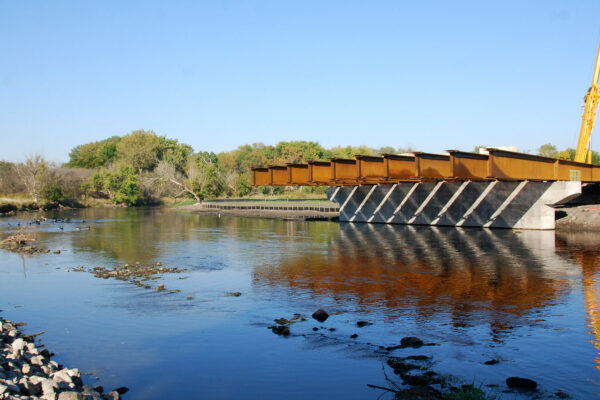Fracture Critical & QC/QA Inspections

The Kansas Division manages and participates in multiple statewide bridge inspection programs, most recently the Kansas Department of Transportation’s (KDOT) Fracture Critical Inspection and QC/QA Inspection Programs. These efforts are part of a larger project to complete inspections of all “legal” bridge structures owned by Local Public Authorities (LPA) throughout the state of Kansas—more than 20,000 statewide. Structures inspected by Benesch range in size, type, age and location and include bridges, levees and ancillary highway structures. Beyond fieldwork, Benesch supports clients with load-rating analyses, data management and asset management services.
Benesch performed in-depth fracture critical inspections for a total of 52 steel structures in six counties. Most bridges were steel low truss structures in addition to several steel high trusses, two-Girder structures and floor beam-stringer structures. During these, Benesch inspectors examine each bridge member from an arm’s length distance. Defects and areas of potential concern are photographed and noted in a formal report. In addition, all members and bridge dimensions are measured for a future load rating calculation, also completed by Benesch. A unique facet of fracture critical inspections is the use of ultrasonic testing equipment to perform non-destructive testing of all truss pins.
The Benesch Team also manages the KDOT’s Quality Control/Quality Assurance Program for bridge inspections, which oversees approximately 20,000 local bridges located along off-system (non-highway) routes. As KDOT’s representative, Benesch performs QC/QA reviews of 10% of the entire inventory biennially, or approximately 1,100 bridges annually. A QC/QA review involves verification of both office documentation (bridge files) and field-collected information. In this role, Benesch interfaces with county and city bridge owners across the entire state to review routine and fracture critical inspections for multiple designs, materials types and lengths. Specifically, Benesch is responsible for verifying scour assessments, POAs (plans of action), underwater inspections and load ratings.
Benesch developed and implemented its own paperless approach for the QC/QA Program. Going paperless enabled KDOT to realize a nearly 30% reduction in manhours and direct costs. The core of this paperless inspection process is the electronic bridge inspection form, a digital document based on MS Excel and Visual Basic, which is compatible with most operating platforms and mobile devices. Inspectors efficiently enter inspection data into field tablets on site, which is seamlessly backed up on SD cards and transferred to project servers through mobile data devices. The same process is used with inspection photos taken with Bluetooth-enabled cameras. Repetitive data entry and hard-to-read handwritten notes are eliminated, minimizing data discrepancies caused by human error. This paperless process produces significant cost savings and efficiencies using electronic data collection, storage and management tools to generate customized reports.










